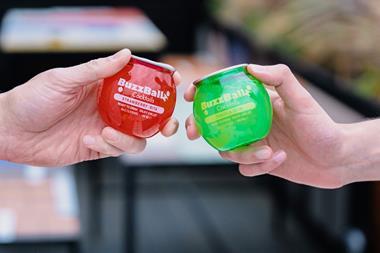
The arrival of HFSS regulations will be a massive change for many brands. Display promotions of foods that are high in fat, salt and sugar will be banned from October, and restrictions on multibuys and advertising are due to follow.
So how can brands continue to market their products without completely changing their product range, ingredients or recipes? At CCW, we believe these restrictions should be seen as an opportunity to forge better relationships with your brand through creative innovation and technology.
After all, wasn’t it Orson Welles who once said, “out of limitation, comes great creativity”?
Here are our five top tips:
1. Right message, right moment
The advertising element of the restrictions will apply to products specifically. That means brands will still be able to advertise pre-watershed on TV and online, as long as they don’t show the specific HFSS products. Therefore, this is the perfect opportunity for brands to devise some creative, purpose-driven ads. Brands should consider looking into what their target audience cares about most and developing new campaigns centred on that: your mission, values or the purpose behind your brand or products.
As an example, Dove has launched many successful campaigns facing important issues such as body confidence, mental health and self esteem. Likewise, Cadbury focuses on little moments of joy – without mentioning its products at all.
2. Stand out in the aisles
Three-quarters of consumers say packaging design influences their purchasing decisions. Now that a large proportion of the store is out of bounds, you have even more motivation to stand out from the crowd in the aisles. Maybe this is a chance to revisit your brand packaging to be more distinctive in your design and style.
Consumers are more comfortable than ever using webAR and filters on the go. Brands are starting to integrate webAR, personalisation and gamification into their brand packaging for a more memorable experience.
As an example, the M&M’s Eye-Spy Pretzel app is a simple, fun game, which tasks users with finding the pretzel hidden within an image full of M&M’s. This relatively simple game led to 25,000 new likes and around 6,000 shares on Facebook.
3. Consider interactive marketing
Innovative, interactive marketing can encourage more in-aisle engagement. In fact, the humble QR Code is having a bit of a revival, with brands looking to give their customer experience the edge. Using QR codes, brands can direct customers either to social media, to increase their following, or directly to the website, to increase sales. QR codes can lead people to a space with more information, ads and sales tactics to help in their purchase journey
4. Explore new media channels
While the HFSS rules are restricting promotions in-store – and are poised to cover online and TV, too – there are so many other ways to conduct effective advertising and marketing campaigns. If there was ever a time to become experiential, it’s now. Trial a new podcast, utilise radio stations, start an event or create a pop up – there are so many creative avenues to experiment with.
Another great tactic is to develop your social media personality. Big brands such as KFC have nailed this tactic, gaining followers purely for their entertainment value without having to constantly push product messaging.
5. Connect the dots with a ‘phygital’ approach
The world of the ‘phygital’ – marrying both physical and digital assets – will not only improve your customer experience but will have a domino effect on brand loyalty and user-generated content. All the while, you’re in the driving seat when it comes to your experience and your data – whether this is on your own direct-to-consumer ecommerce site, Amazon portal or third-party social stores/apps. Keep your piece of the pie, by nurturing the customer experience at every stage; pre and post-purchase.



















No comments yet